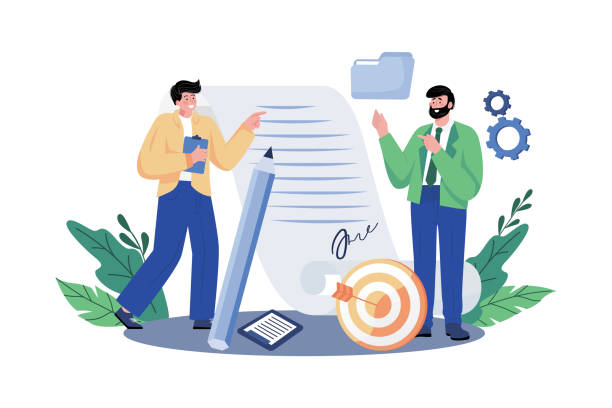Introduction to the Importance of SEO-Optimized Website Design in the Digital World
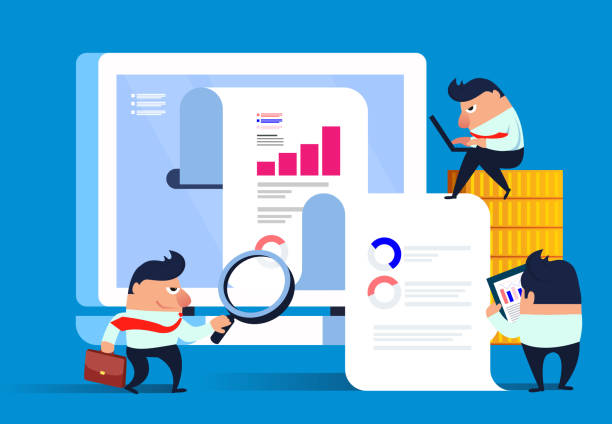
In the current digital age, an online presence is vital for every business.
But simply having a website is not enough; your website must be accessible and visible.
This is where the concept of #SEO_optimized_website_design becomes important.
SEO-optimized website design means building a website that is designed from the outset with SEO principles in mind to achieve the best ranking in search engine results.
This approach helps you attract more organic traffic and increase your brand credibility.
Without a strong strategy for website optimization for search engines, even the most beautiful websites might get lost in the fierce online competition.
This section is an educational guide to understanding the foundations of why combining design and SEO from the beginning is essential.
The importance of this work not only helps your site be seen but also attracts more targeted visitors, which in turn means increasing conversion rates and ultimately, business growth.
Understanding how search engines read and rank websites is the first step towards designing a search-optimized website.
In this article, we will professionally cover all aspects of this process.
Did you know that poor online store design can drive away up to 70% of your potential customers? Rasaweb transforms your sales with professional and user-friendly e-commerce website designs.
✅ Significant increase in sales and revenue
✅ Full optimization for search engines and mobile devices
⚡ [Get free consultation from Rasaweb]
What are the foundations of SEO-centric website design?

For a website to be truly SEO-optimized, special attention must be paid to three main pillars of SEO: Technical SEO, On-Page SEO, and Off-Page SEO.
SEO-optimized website design means that the website architecture should be such that search engines can easily crawl and index it.
This includes URL structure, the use of sitemaps, robots.txt file, and ensuring high loading speed.
On-Page SEO relates to your website’s content; including the correct use of keywords, optimizing title tags and meta descriptions, heading structure (H1, H2, H3), and content quality.
Off-Page SEO includes activities performed outside your website, such as link building and social media presence.
A questionable content here could be: Do all web designers have full knowledge of these three pillars? And how can one ensure that a designer has sufficient knowledge to implement these principles? An SEO-optimized website considers all these aspects from the very early stages of development.
Mobile optimization is also a crucial component of technical SEO, as a large portion of searches today are performed via mobile devices.
This is a comprehensive explanation of the fundamental principles that every developer and business owner should be aware of.
Failure to adhere to any of these principles can severely harm your website’s ranking in search results.
The Importance of Technical SEO in SEO-Centric Website Design and Development
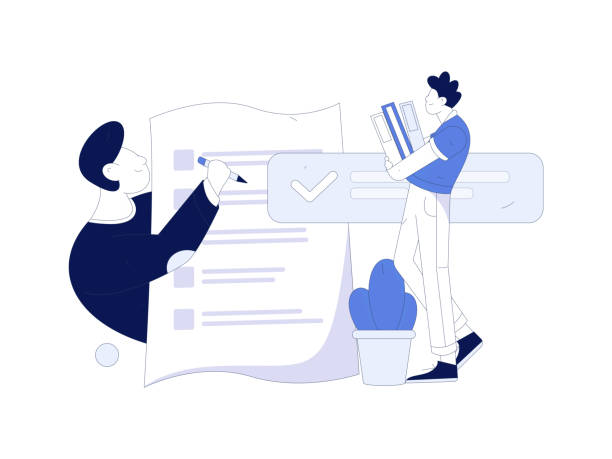
Technical SEO is a vital part of SEO-optimized website design that is often overlooked.
This aspect involves optimizing your website’s infrastructure so that search engines can understand it more effectively.
Issues such as page loading speed, mobile-friendliness, structured data (Schema Markup), and 404 error management all fall into this category.
A slow website or one that does not display well on mobile not only provides a poor user experience but also gets penalized by search engines.
Tools like Google PageSpeed Insights can help you identify speed issues.
Implementing HTTPS for website security and credibility is also an important SEO factor.
Furthermore, ensuring that your XML sitemap is correctly configured and submitted to search engines helps them discover and index all your pages.
Education in this area is crucial for web designers to have a complete understanding of these principles.
A deep understanding of these technical issues transforms a regular website design into a truly SEO-optimized website that is ready for the future.
To illustrate some of these technical factors, examine the table below:
| Technical Factor | Description | Importance for SEO |
|---|---|---|
| Loading Speed | Time required for a page’s content to fully load | User experience and ranking factor |
| Mobile-Friendly | Ability to display correctly and function properly on mobile devices | Essential for mobile search ranking (Mobile-First Indexing) |
| URL Structure | Designing website addresses to be readable and descriptive | Helps search engines and users understand content |
| SSL Certificate (HTTPS) | Security of communications between browser and server | Ranking factor and increases user trust |
The Role of On-Page SEO in the Content of an Optimized Website for Search Engines

After ensuring the technical foundations, it’s time for On-Page SEO, which is directly related to your website’s content and page structure.
An SEO-optimized website design prioritizes content optimization.
This includes choosing appropriate keywords, placing them in Title Tags, Meta Descriptions, and headings (H1, H2, H3).
Your content must be valuable, relevant, and comprehensive to attract and retain users.
Using images with proper Alt Text, strong Internal Linking to guide users and search engines throughout the site, and ensuring text readability are other important aspects of On-Page SEO.
A precise analysis of competitors and their keywords can help you produce superior content.
Did you know that long, high-quality content often ranks better? This is a key guidance for content creation.
Also, answering common user questions in your content demonstrates your expertise, and search engines value this.
Website optimization for search through content means creating value that is understandable to both users and search engine bots.
This process should be continuous and involve regular updates.
Research shows that 80% of customers trust companies with professional websites more. Does your current website inspire this trust?
With Rasaweb’s corporate website design services, solve the problem of customer distrust and a weak online image forever!
✅ Create a professional image and increase customer trust
✅ Attract more sales leads and grow your business
⚡ Get Free Consultation
User Experience (UX) and its Relation to SEO-Acceptable Website Design

SEO-optimized website design is not just about satisfying search engines; it equally values user satisfaction.
Good User Experience (UX) not only makes users stay longer on your website and view more pages but also indirectly impacts SEO rankings.
Low Bounce Rate, high Dwell Time, and good Click-Through Rate (CTR) send positive signals to search engines.
A website with easy navigation, responsive design, and accessible content provides a positive user experience.
Entertaining and visually appealing website design can also help improve UX, even if it’s not directly a ranking factor.
This is an explanation to show the overlap between SEO and UX.
For instance, if users cannot easily find the information they need due to a complex user interface, they will leave your website, which sends a negative signal to search engines.
Therefore, in designing and optimizing a site for search engines, we must always consider whether this change is beneficial for the end-user? This fundamental question should be asked at every stage of design.
The ultimate goal of an SEO-optimized website is to attract and retain users.
Content Strategy and its Role in SEO-Capable Website Design
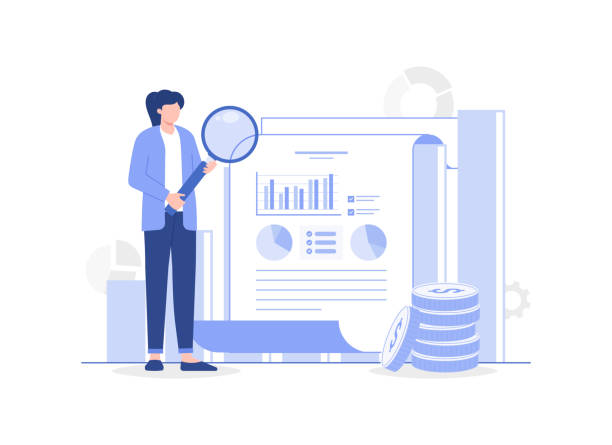
Content strategy is the heart of every SEO-optimized website design.
High-quality, relevant, and up-to-date content not only attracts users but also drives search engines to your website.
To produce content that is optimized for both users and SEO, you need to conduct thorough keyword research.
This research helps you identify your users’ needs and questions and create content that answers them.
Content types including blog posts, videos, infographics, and service/product pages, each provide unique opportunities to target different keywords.
The news regarding new Google algorithms is that they are increasingly prioritizing content quality and depth.
This means moving away from “thin” content or content filled with unnecessary keywords.
An important explanation is that your content should be shareable to attract organic links and increase your site’s credibility.
Developing a content calendar can help you plan and produce content regularly.
This means that SEO-optimized website design involves continuous planning for producing content that is always fresh and engaging.
Remember that content should be continuously reviewed and updated to remain relevant and maintain its ranking.
Advanced SEO Techniques in the SEO-Optimized Website Design Process

In addition to the basics, there are some advanced SEO techniques that can significantly impact the SEO-optimized website design and its performance.
Implementing Structured Data, also known as Schema Markup, helps search engines better understand your content and display it in richer formats (Rich Snippets) in search results.
This can dramatically increase your Click-Through Rate (CTR).
Optimizing for Voice Search has also gained increasing importance given the growth of voice assistants.
An analysis of how users search via voice shows that they typically use longer, more natural sentences, so long-tail keywords play a crucial role.
Using Accelerated Mobile Pages (AMP) for faster mobile page loading, and implementing PWAs (Progressive Web Apps) to provide an app-like user experience, are also advanced techniques.
Specialization in these areas distinguishes a website designer from others.
Below is a table of some of these techniques and their applications in search-optimized website design.
| Technique | Description | SEO Benefit |
|---|---|---|
| Schema Markup | Adding special codes to help search engines understand content | Displaying Rich Snippets in SERP, increasing CTR |
| Voice Search Optimization | Targeting long-tail and conversational keywords | Accessing a new group of users |
| AMP (Accelerated Mobile Pages) | Lighter versions of web pages for fast loading on mobile | Increasing mobile speed, improving user experience |
| PWA (Progressive Web Apps) | Web applications that provide an app-like user experience | Increasing engagement, conversion rate, and offline capability |
Monitoring and Analyzing the Performance of an SEO-Optimized Website

After launch and optimization, the next crucial step is monitoring and analyzing website performance.
SEO-optimized website design is not a one-time process; rather, it requires continuous review and optimization.
Tools like Google Analytics and Google Search Console provide valuable data regarding your website’s performance in search results, incoming traffic, user behavior, and potential errors.
A precise analysis of this data can help you identify the strengths and weaknesses of your SEO strategy and make data-driven decisions for future improvements.
For example, if you notice that certain pages have a high bounce rate, it might be necessary to revise their content or improve their user experience.
Or if specific keywords do not rank well in search results, the relevant content might need re-optimization.
This is practical guidance for maintaining and continuously improving your rankings.
A questionable content here could be: Do organizations sufficiently value data analysis? And how can a culture of using data in SEO decision-making be institutionalized? Ultimately, the success of an SEO-optimized website depends on your ability to interpret data and adapt to algorithm changes.
Did you know that 94% of a first impression of a company is related to its website design?
Rasaweb, by offering professional corporate website design services, helps you create the best first impression.
✅ Create a professional and trustworthy image for your brand
✅ Easier attraction of potential customers and improvement of online standing
⚡ Get Free Corporate Website Design Consultation
Common Mistakes in SEO-Optimized Website Design and How to Avoid Them

On the path to SEO-optimized website design, there are common mistakes that can render your efforts fruitless.
Insufficient keyword research is one of the biggest of these mistakes.
Without a correct understanding of what users are searching for, targeted content creation is impossible.
Another is neglecting website speed; even if your content is excellent, a slow website can frustrate users and search engines.
Duplicate Content is also a major error that can harm your ranking.
Education on avoiding these mistakes is very important.
Furthermore, forgetting mobile optimization in today’s world, where most searches are done via mobile, is an unforgivable mistake.
A questionable content here is: Why do many designers and developers still make these mistakes despite abundant information? The answer might lie in the complexity of SEO and a lack of updated knowledge.
The good news is that by being aware of these mistakes and using appropriate tools, they can be easily avoided to achieve a truly SEO-optimized website design.
The importance of proper internal linking and avoiding Black Hat SEO techniques are also things to be strictly avoided.
The Future of SEO-Optimized Website Design and Emerging Trends
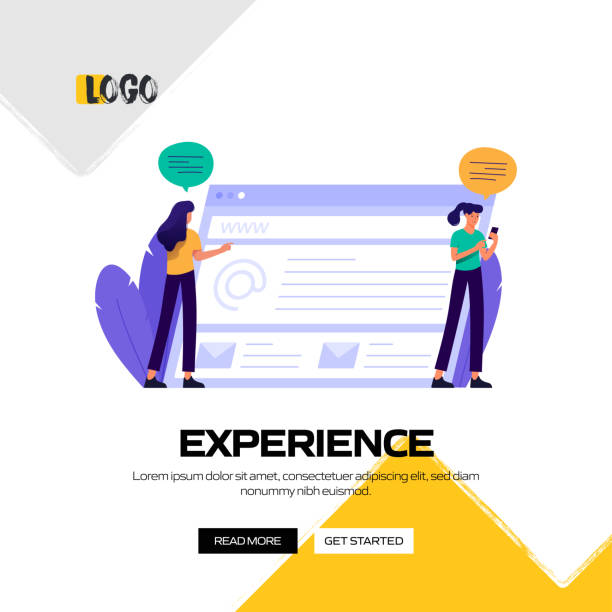
SEO-optimized website design is a dynamic and evolving field, and its future is shaped by emerging trends.
Artificial intelligence (AI) and machine learning are playing an increasingly important role in search engine algorithms.
This means that search engines are becoming smarter in understanding natural language and user intent.
Therefore, producing high-quality, comprehensive content that truly addresses user needs is becoming even more important.
An analysis of these trends shows that SEO is moving towards semantics and a deeper understanding of content, not just keyword matching.
Visual Search is also growing, offering web designers new opportunities to optimize images and videos.
It is interesting to see how new technologies, such as Augmented Reality (AR) and Virtual Reality (VR), can impact SEO-optimized website design in the future.
Specializing in these new areas creates a significant competitive advantage for web designers.
For future success, designers and website owners must constantly learn and adapt to these changes to ensure their websites always remain at the top of search results.
The future of SEO is moving towards providing the best possible user experience and answering their most complex queries.
Frequently Asked Questions
| Row | Question | Answer |
|---|---|---|
| 1 | What is an SEO-optimized website? | It is a website designed and developed following Search Engine Optimization (SEO) principles to achieve a higher ranking in search results. |
| 2 | Why is having an SEO-optimized website important? | It increases visibility, attracts organic traffic, boosts conversions, and builds brand credibility, all of which contribute to business growth. |
| 3 | What are the key elements of SEO-optimized website design? | Technical SEO (speed, mobile compatibility), On-Page SEO (keywords, content), User Experience (UX), and website security (HTTPS). |
| 4 | How does website speed affect SEO? | Faster sites improve user experience, reduce bounce rates, and are favored by search engines, leading to better rankings. |
| 5 | Is mobile compatibility important for SEO? | Absolutely. Google uses mobile-first indexing, so responsive design for mobile is crucial for ranking. |
| 6 | What role does content play in SEO-optimized website design? | High-quality, relevant, and keyword-optimized content is fundamental for attracting users and signaling relevance to search engines. |
| 7 | What is keyword research and why is it important? | It’s finding popular search terms people use. This process helps align content with user intent and attracts relevant traffic. |
| 8 | How is User Experience (UX) related to SEO? | Good UX (easy navigation, readability) keeps users on the site longer, reduces bounce rates, and sends positive signals to search engines. |
| 9 | What is a Sitemap and how does it help SEO? | It’s a file listing all pages on a site. It helps search engines crawl and index your site more effectively. |
| 10 | Should I use HTTPS for my website? | Yes, HTTPS provides security and is considered a small ranking factor. It also increases user trust. |
And other services of Rasaweb Advertising Agency in the field of advertising
- Smart Conversion Rate Optimization: A combination of creativity and technology to increase site traffic through intelligent data analysis.
- Smart Brand Identity: A combination of creativity and technology to increase sales through attractive user interface design.
- Smart Digital Advertising: A fast and efficient solution for campaign management focusing on marketing automation.
- Smart Conversion Rate Optimization: An effective tool to improve SEO ranking by optimizing key pages.
- Smart Social Media: Designed for businesses looking to increase click-through rates by optimizing key pages.
And over hundreds of other services in the field of internet advertising, advertising consultation, and organizational solutions
Internet Advertising | Advertising Strategy | Advertorial
Sources
SEO-Optimized Website Design in Zhaket
Importance of SEO in Website Design – Iranserver
SEO-Friendly Website Design Guide – Web24
SEO Training for Beginners – 7Learn
? To elevate your business in the digital space, Rasaweb Afarin Digital Marketing Agency is with you. By leveraging the latest online marketing methods, from SEO and content creation to website design with a modern user interface, we offer comprehensive and results-oriented solutions to increase your visibility and attract loyal customers. Let our expertise pave your digital success path and help you achieve your goals.
📍 Tehran, Mirdamad Street, next to Bank Markazi, Kazeroun Jonoubi Alley, Ramin Alley, No. 6

